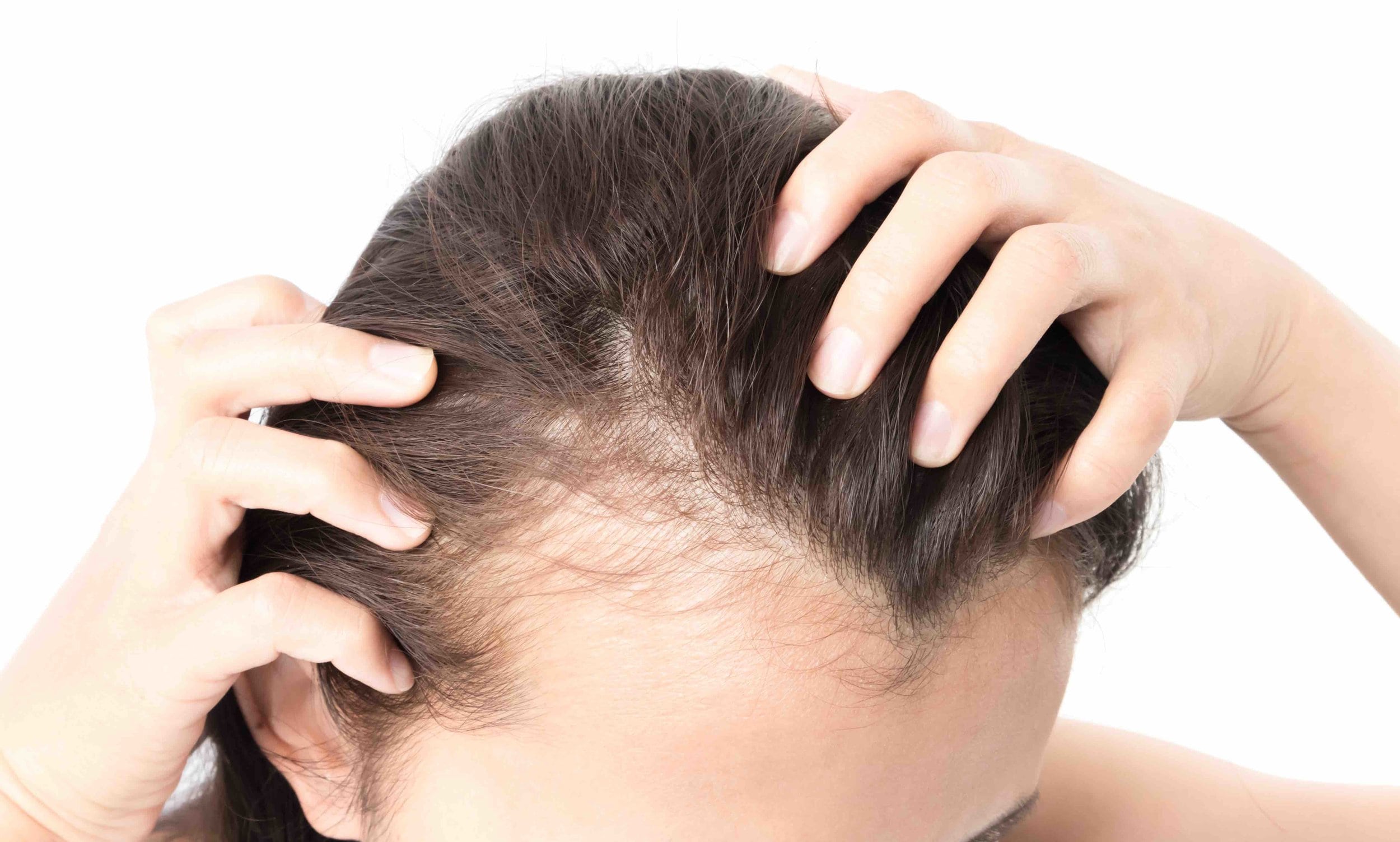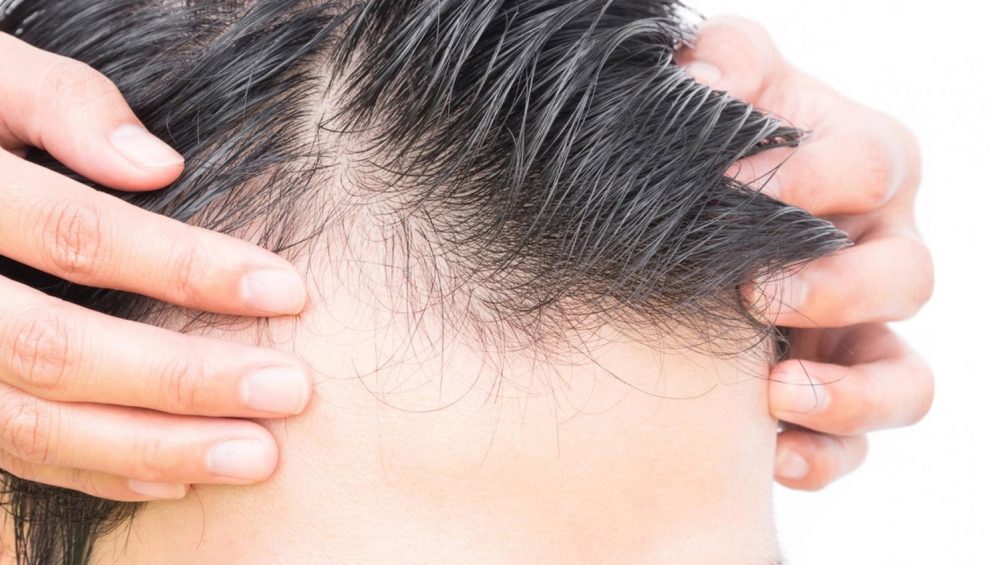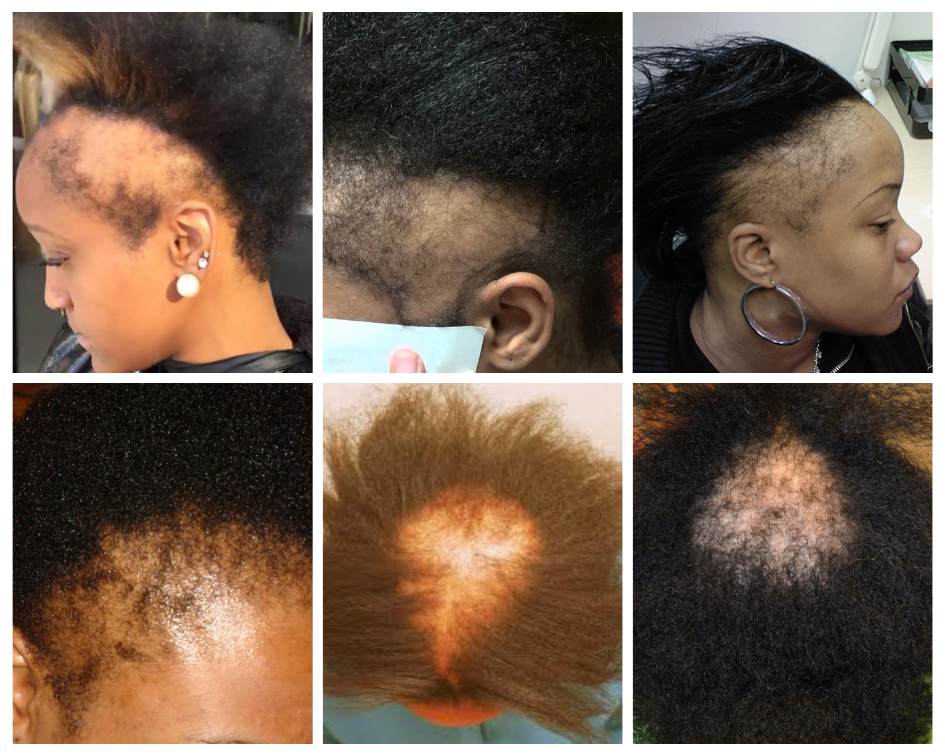Thinning Hair Following Pregnancy
Other hormonal imbalances can also lead to hair loss, especially the wildly fluctuating hormones that occur following pregnancy and childbirth. It takes time after pregnancy for hormone levels to return to normal, so it’s not at all uncommon for post-partum moms to notice thinning hair or even patches of baldness. This often occurs about three months after babys arrival. Don’t worry as the rest of your body recovers, so will your hair follicles. The hair loss is only temporary your hair will grow back.
Hair Loss Due To Hormones: Will It Grow Back
Hair loss due to hormones is a reality for many people after menopause as well as during pregnancy. But will it grow back? The answer is yes, but there are also things that can help the body along.
Wash hair regularly with a mild shampoo. Treat hair gently. Dont comb or brush hair when its wet. Using the fingers to detangle is a gentler option. Putting hair up in a tight bun or ponytail can cause added stress on the hair and its follicles.
Finally, try to limit the use of hair dryers or irons on hair, as they can dry and damage it.
Here are five tips to prevent hair loss during the menopausal transition and after menopause:
What’s Your Burning Question
Can you wake a sleepwalker? Why do we grind our teeth and how do we stop?
If you have a burning health question you have always wanted to know the answer to get in touch via We can then take your question to the experts.
When it comes to stimulating hair growth, a doctor or dermatologist might recommend minoxidil, a lotion also now in tablet form which has been used since the 1970s, and is available without a prescription .
Again, side effects are uncommon, but include scalp dryness, itching and dermatitis.
There are also a number of specific medications for women which block the effect of androgen hormones, and help to slow the progression of hair loss.
Whether or not a particular treatment is effective can depend on a number of factors, including the extent of a person’s hair loss.
“The longer it’s been going on, the more hairs are going to be irreversibly lost,” Professor Sinclair says.
Beyond medical treatments, wigs and hair pieces can be viable cosmetic options for people experiencing hair loss.
Don’t Miss: Can Lupus Cause Hair Loss
Your Hormones Are Changing
Just as pregnancy hormone changes can cause hair loss, so can switching or going off birth-control pills. This can also cause telogen effluvium, and it may be more likely if you have a family history of hair loss. The change in the hormonal balance that occurs at menopause may also have the same result. “The androgen receptors on the scalp becoming activated,” explains Mark Hammonds, MD, a dermatologist with Scott & White Clinic in Round Rock, Texas. “The hair follicles will miniaturize and then you start to lose more hair.”
If a new Rx is a problem, switch back or talk to your doctor about other birth control types. Stopping oral contraceptives can also sometimes cause hair loss, but this is temporary, says Dr. Hammonds.
How Is Postpartum Hair Loss Treated

There’s no treatment for postpartum hair loss, but these steps can help your hair feel fuller and prevent further hair loss and damage:
- Choose a shampoo and conditioner that add volume. Volumizing shampoos and lighter conditioners can add body to your hair. You may have to experiment to find products that work best for your hair type.
- Treat your hair with care. Be gentle when washing and combing your hair. Use lower heat settings on blow dryers and styling irons to prevent damage. Avoid tight ponytails and braids that can add tension to your hair and lead to more hair loss.
- Try a different hairstyle. Shorter cuts may give your hair a fuller appearance. They are also easier to take care of, which can be helpful when you have a new baby.
Also make sure youre getting the nutrients you need for hair growth with a healthy diet. Talk to your provider about vitamins to supplement your diet.
Recommended Reading: How To Prevent Hair Loss At A Young Age
You Have Low Iron Levels
The American Academy of Dermatology also says that not getting enough iron into your diet can lead to unwanted hair loss, too.
According to the National Heart, Lung, and Blood Institute , iron-deficiency anemia occurs when you don’t have enough iron in your bodythe symptoms of which include fatigue, tiredness, shortness of breath, or chest pain. To help remedy this, your doctor might suggest iron supplements or other healthy lifestyle choices, like increasing your intake of both iron- and vitamin-C rich foods.
What Precautions Should You Take Before A Surgery To Avoid Hair Loss
Anesthesia-related hair loss impacts everyone. And, because of this, theres really no way to prevent this from happening beforehand.
General anesthesia is no respecter of persons, meaning it doesnt matter the hair type or texture of hair, if a person has a chemical sensitivity to short-term fluctuating levels of oxygen transporting across the cellular membrane, they may experience TE post-anesthesia, Ky says.
Still, Ky stresses the importance of evaluating your current state of health to ensure there arent any pre-existing imbalances that could lead to alopecia. Assessing the entire person to distinguish side effects from medical causes and other imbalances is critical to correcting the hair loss.
Read Also: What Is Keranique Hair Loss Treatment
How Much Hair Loss Is Normal In A Day
According to the American Academy of Dermatologists, its normal to lose anywhere from 50 to 100 strands of hair per day. For people with longer hair strands, losing them may be more noticeable. Since there are 100,000 hair follicles or more on each persons scalp, the loss of 100 or so hair strands a day doesnt make a big difference in appearance.
Shedding Light On Female Alopecia
Rashi C. Waghel, PharmD
Jennifer A. Waitzman, PharmD, BCACPAssistant Professor of PharmacyWingate, North Carolina
US Pharm. 2013 38:62-65.
ABSTRACT: Alopecia is a common problem in females. Several typesof alopecia exist, each having different etiologies and treatmentoptions. Regardless of the cause or type of alopecia, hair loss can havea negative impact on an individuals self-image therefore, it isimportant to address patients emotional needs as well as their medicalhealth needs. Although FDA-approved pharmacologic options for femalealopecia are limited, several medications are being investigated fortheir use in this population. Regardless of whether a patient decides toutilize pharmacologic treatment, minimization strategies can helpreduce hair loss and alleviate the negative emotional impact of thiscondition.
Alopecia, more commonly referred to as hair loss, is a problemfaced by millions of people in the United States. Alopecia does notrefer to normal, everyday loss of hair. It is common for a person tolose around 50 to 100 hairs each day.1 Alopecia suggests anamount of hair loss greater than what is normally expected.Traditionally, more attention has been paid to male-pattern baldness however, alopecia is common in females as well. More than 21 millionfemales in the U.S. are affected by alopecia.2
You May Like: What Will A Dermatologist Do For Hair Loss
How Does Hair Loss Occur
How Does Hair Loss Occur?
Each hair has a life cycle, just like the skin cells. Once the hair shed, a new hair develops in its place. Losing 80 to 180 strands of hair per day is considered normal. However once you start losing your hair at a rate that has accelerated faster than normal, you will inevitably begin to see the consequences of this.
An inherited hair loss disorder called male pattern baldness or female pattern baldness is the most common cause of permanent hair loss. At Coolest Clinic, we help you find the best way to solve the problem and avoid further hair loss on the basis of your personal hair loss experience and what you want to achieve.
Hair Loss in Men
Hair loss in men is determined by retracting hairline, forming in the shape of the letter M and thin hair from the head crown. The shallow male hair loss pattern emerges progressively over time and may also occur in the head as thinner fur. In general, those who are bald at an early age have a higher risk of overall baldness.
Hair Loss in Women
Female pattern baldness is also known as androgenic alopecia. This hair loss trend is much harder to predict compared to the male hair loss pattern. That kind of hair loss in women begins in middle ages. The hair grows thin as new growth slows and the scalp slows through and through. The first symptoms of female trait baldness typically are lack of hair at the segment and sometimes at the temple.
Inherited Hair Loss
Treatment of Inherited Hair Loss
Contact us
When Men Start To Go Bald
In some males, the hair growth process slows right down.
The growth phase of each hair gradually becomes shorter, and the resting phase becomes longer. Eventually the hairs that are growing become so short that they barely emerge from their hair follicle.
The process begins at the sides of the head and at a patch on the crown, and spreads from there. As the hairline recedes backwards, the patch gets larger too.
This is known as male “pattern baldness”, or androgenetic alopecia. It’s the most common type of baldness, affecting about half of all men by the age of 50 and more than 80 per cent by the age of 70.
Don’t Miss: Does B12 Help With Hair Loss
Overview Of Alopecia Areata
Alopecia areata is a disease that happens when the immune system attacks hair follicles and causes hair loss. Hair follicles are the structures in skin that form hair. While hair can be lost from any part of the body, alopecia areata usually affects the head and face. Hair typically falls out in small, round patches about the size of a quarter, but in some cases, hair loss is more extensive. Most people with the disease are healthy and have no other symptoms.
The course of alopecia areata varies from person to person. Some have bouts of hair loss throughout their lives, while others only have one episode. Recovery is unpredictable too, with hair regrowing fully in some people but not others.
There is no cure for alopecia areata, but there are treatments that help hair grow back more quickly. There are also resources to help people cope with hair loss.
What Is The Prognosis/outlook For Women With Hair Loss

Your diagnosis determines the prognosis:
- Anagen and telogen shedding may stop with time.
- Treat any diseases associated with hair loss.
- Disguise or cover your hair loss using a wig or hat.
- Early treatment of alopecia may reduce the speed of thinning and may promote regrowth.
While hair loss is not itself dangerous, women with hair loss tend to be very upset by the changes to their appearance. These negative feelings can affect self-esteem and social lives. Recent studies suggest that FPHL can be associated with conditions that include metabolic syndrome, endocrine disorders and diabetes.
Also Check: Does Chlamydia Cause Hair Loss
How Long Does Postpartum Hair Loss Last What Timeline To Expect For Hair Shedding After Giving Birth
Postpartum hair shedding is very common for women in the months after giving birth. And, while this is startling and frustrating, it is perfectly normal and most women can expect their hair to bounce right back.
Sometimes, part of the frustration from hair loss can be not knowing what to expect, or how long shedding will continue.
Below, we will outline some of the most common timelines for postpartum hair loss including when it normally begins, how long the shedding tends to last, and when you can expect your hair to look relatively back to where it was pre-pregnancy.
How Long Until Your Hair Returns To Normal With Postpartum Hair Loss
As a general rule of thumb for postpartum hair loss, you can normally expect your hair to look more or less the same as pre-pregnancy by your babyâs first birthday.
For some women, their hair may even be back to normal within 6 months. So, if you are stressing over postpartum hair loss, take comfort in knowing that postpartum hair loss is normal, and most women will have their hair back to its usual thickness relatively quickly.
Of course, it may take a while for the regrown hairs to reach their same length if you had pretty long hair before your baby. So, you may want to take this time to have fun trying out some shorter styles to give those âbaby hairsâ time to catch up to the length of the rest of your hair.
Recommended Reading: Is Nioxin Good For Hair Loss
How Does Hair Grow
Hair grows from small pores in the skin on your scalp called follicles. Your hair is continuously growing and shedding. This cycle of hair growth has three phases that repeat throughout your lifetime:
- Anagen phase is the phase of active hair growth. It can last between two and six years. Most of your hair is in this phase at any given time.
- Catagen phase is a short, transitional phase where the hair follicles shrink.
- Telogen phase is a resting phase that lasts about three months. After, the follicle releases the hair and the hair falls out.
Another name for postpartum hair loss is telogen effluvium.
How Fast Can The Hair Loss Process Happen
Hair loss can be a distressing event for both men and women. The rate at which hair loss occurs varies significantly from person to person, based on a wide range of factors. At Hair Loss Specialists, we have facts about hair loss that will help you understand why it occurs, how fast it can occur, and what you can do to slow hair loss or even reverse it with the right cosmetic procedures.
Causes of Hair LossThe type of hair loss that is occurring, as well as reason for the hair loss, will both have a direct impact on just how fast the loss might occur in some people. One of the most common types of hair loss in men is male pattern baldness, or androgentic alopecia. Possible causes for this type of hair loss include:
Temporary hair loss, also referred to as telogen effluvium, could be the result of some medications, stress or the use of harsh hair products. In these situations, individuals may be able to stop or even reverse at least some of the hair loss by stopping the cause of the problem, such as switching medications, or finding constructive ways to deal with stress. Once the trigger of the hair loss is eliminated, normal hair growth may be regained.
Call 866-471-8869 for FREE Consultation
Read Also: Why Is My Hair Thinning So Much
You’re Not Eating Enough Protein
According to the American Academy of Dermatology, having too little protein in your diet can potentially lead to unwanted hair loss. It may also be a reason why, anecdotally speaking, those on the keto diet also report some hair loss from the change in their eating habits.
You can easily add more protein into your diet by incorporating more eggs, chicken, beans, and yogurt into your daily meal plan.
Things To Know About Hair Loss In Men And In Women
- Hair loss without scarring of the scalp is a very common condition and affects most people at some time in their lives.
- Medical professionals should distinguish hair loss from breakage of the hair shaft from hair loss due to decreased hair growth.
- Common balding occurs in men and women and is due to the effect of testosterone metabolites in genetically susceptible hair follicles.
- Thyroid disease, anemia, protein deficiency, secondary syphilis, chemotherapy, and low vitamin levels may cause hair loss.
- Alopecia areata is a form of hair loss produced by the autoimmune destruction of hair follicles in localized areas of the skin.
- Medications indicated for hair regrowth include minoxidil and finasteride .
- Prevention of hair loss includes good hair hygiene, regular shampooing, and good nutrition.
- Medical health screening for hair loss may include blood tests such as complete blood count , iron level, vitamin B, thyroid function tests , and a biopsy of the scalp.
Don’t Miss: Is Olaplex Good For Hair Loss
Strut Health Prescription Hair Loss Medications Online
At Strut Health, we offer prescription medications for men and women who are experiencing hair loss.
Our hair loss medications for women are not suitable for women during pregnancy or those who are breastfeeding. But, if your hair is struggling to recover from hair losses and you are not pregnant or breastfeeding, our topical formula containing minoxidil and spironolactone may be able to help.
What Are Causes And Risk Factors For Hair Loss

Because there are many types of hair loss, finding the cause can be challenging. This review will cover the most common causes of hair loss occurring on normal unscarred scalp skin. The medical term for hair loss is alopecia.
- Most hair loss is not associated with systemic or internal disease, nor is poor diet a frequent factor. Hair may simply thin as a result of predetermined genetic factors and the overall aging process.
- Many men and women may notice mild physiologic thinning of hair starting in their 30s and 40s.
- Life vicissitudes may cause hair loss, including
- hormonal changes like those in pregnancy, puberty, and menopause.
Also Check: What Causes Hair Loss In Young Men